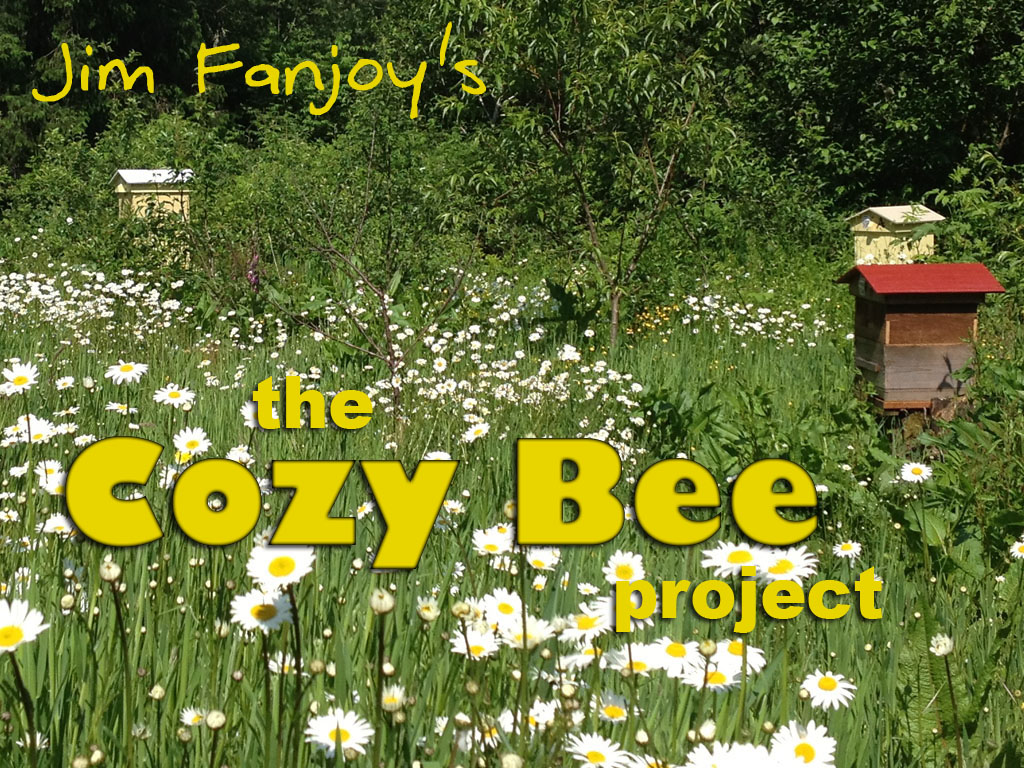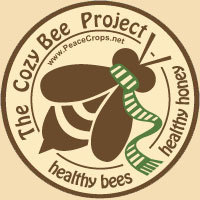In over a century since its introduction, the Langstroth hive has become the de-facto standard for keeping bees in North America. For years, different configurations of roofs, bottoms, and vents have been tried with the intent of making the hive more hospitable for bees. The effectiveness of these measures has been judged mostly by intuition, and passed down to generations of beekeepers by word-of-mouth and common practice. My study aims to evaluate the performance of several hive roof styles by using computerized data loggers to track the humidity and temperature inside the hive through the critical overwinter months. Then, with the help of scientists at Oregon State University’s Honey Bee Lab, I’ll compare that data to external climate data and draw objective conclusions so beekeepers can make informed choices that will help increase the chances of their bees surviving the winter. A final report will be made public to beekeepers on the internet and offered for presentation at the Oregon State Beekeepers Association annual conference.
About me
 My name is Jim Fanjoy, and I’m a beekeeper. I started with bees after serving with the Peace Corps in Guatemala, and now I keep about 20 hives at my farm in Oregon, where we produce raw unfiltered honey as well as apiary products like lip balm and beeswax. I love spreading the word about bees: I lecture on beekeeping at community events, mentor apprentices in the Oregon Master Beekeeper program, and I teach bee classes here in the US as well as Latin America.
My name is Jim Fanjoy, and I’m a beekeeper. I started with bees after serving with the Peace Corps in Guatemala, and now I keep about 20 hives at my farm in Oregon, where we produce raw unfiltered honey as well as apiary products like lip balm and beeswax. I love spreading the word about bees: I lecture on beekeeping at community events, mentor apprentices in the Oregon Master Beekeeper program, and I teach bee classes here in the US as well as Latin America.
I’m also a meticulous, technically-oriented guy. In my professional life, I’m an architect who spends a lot of time engineering structural systems and designing building infrastructure. This got me to thinking- why don’t we use the same analytical tools we use to monitor human structures to measure and improve living conditions for bees?
About the project
 So I mentioned this idea to some of my friends who are bee scientists and researchers at Oregon State University. Turns out, they think it’s a great idea that would benefit beekeepers (and bees) everywhere, but they don’t have the time or grant funding to take on the project… but they would be happy to lend me technical advice and guidance if I wanted to lead the effort myself.
So I mentioned this idea to some of my friends who are bee scientists and researchers at Oregon State University. Turns out, they think it’s a great idea that would benefit beekeepers (and bees) everywhere, but they don’t have the time or grant funding to take on the project… but they would be happy to lend me technical advice and guidance if I wanted to lead the effort myself.
Much like the citizen-scientists of the nineteenth century, this is a chance for enthusiastic beekeepers and bee lovers to join their resources together in a grassroots effort to solve a problem for the betterment of everyone.
Duration
1 year (May 2015- May 2016)
Location
Northern Tillamook County, Oregon
Scope

I’ll test four roof configurations (garden, migratory, telescoping, and Vivaldi), with a minimum of four hives each for a total of sixteen hives. An outdoor data logger will track ambient air temperature and humidity at each apiary for a year. Oregon State University’s bee lab has volunteered equipment and staff time to perform regular disease testing and parasite evaluations during the experiment. At the end of the year, we’ll collate the data and draw conclusions about best practices for bee health.
Methodology
 OK, if you’ve read this far, you’re serious, so here’s a rough outline of how the study will be performed. My research plan has been developed with the help of two world-renowned bee scientists, Dr. Dewey Caron (professor emeritus, University of Delaware) and Dr. Ramesh Sigili (apiculture professor, Oregon State University). Warning: some beekeeper nerdiness to follow.
OK, if you’ve read this far, you’re serious, so here’s a rough outline of how the study will be performed. My research plan has been developed with the help of two world-renowned bee scientists, Dr. Dewey Caron (professor emeritus, University of Delaware) and Dr. Ramesh Sigili (apiculture professor, Oregon State University). Warning: some beekeeper nerdiness to follow.
- Hives will be set up in matching configurations: screened bottom board, two Langstroth 10-frame deep hive bodies, and sensor-equipped inner cover. Roof type will vary, to be either a migratory top, a telescoping top, a ventilated garden top, or a telescoping top over a Vivaldi board.
- Each hive will be numbered for identification.
- A supplemental data logger in a weatherproof enclosure will be maintained at each apiary to record ambient temperature and humidity for comparison.
- Data collection will officially begin in May of 2015. Data loggers will be set to record hourly temperature and humidity for one year.
- I’ll work the hives every two weeks per traditional beekeeping practices for standard, non-migratory honey production. I’ll record hive activity, brood quantity, queen state, temperament, and so forth.Bees will be sampled monthly for varroa infestation and tested by the lab for Nosema levels.
- Varroa treatment (Apiguard, a naturally occurring thyme essence) will be applied to any colony showing greater than 3% infestation rate when sampled with a standard powdered sugar roll.
- In late fall, entrance reducers will be applied.
- During the overwinter months, to maintain the propolis seal the hive will not be disturbed below the inner cover, and the outer cover will only be removed for emergency dry sugar feeding if indicated by a low hive weight.
- In May of 2016, electronic data will be downloaded from the hives for analysis. By October I will present my findings in article form, as well as a presentation to select beekeeping audiences such as the Oregon State Beekeepers’ conference.
Stretch goals

Me and 6 million bees waiting for new homes
If I receive more funding than required, I’d like to expand the project to include more hives. The more data I get, the more reliable the results. Ideally, I’d like to have six total hives of each type. I already have much of the equipment, but will need additional sensors, hive covers… and since a bear destroyed one of my apiaries last fall, I will also need to buy some extra packages of bees to establish new colonies. For every additional $250 raised, I can add another hive to the study, up to a maximum of 24 total.
Risks and challenges
Beekeeping, like most agricultural endeavors, can be unpredictable. Some challenges:
Colony death: this can occur from pesticide overspray, bear attack, parasitic mite infestation, Colony Collapse Disorder, or a host of other ills. My best defense against this is to be proactive, using the best management practices I’ve learned in my years of keeping bees and studying in the Master Beekeeper program. Having multiple colonies in each test group will ensure that if I lose a colony or two, I will still get useful data for analysis from the other survivors.
Sensor failure: In the event of a technological disaster, I could lose all the data I’ve spent a year collecting. To prevent this, my entire project directory will be backed up weekly by an automated backup system, with archive files stored on a submersible fireproof drive. I will download sensor data quarterly.
Erroneous analysis of data or faulty collection methodology: In order to perform this study to the highest academic standards, I’ve enlisted the aid of Dr. Dewey M. Caron, professor emeritus at the University of Delaware and internationally recognized bee entomologist; as well as Dr. Ramesh Sigili, apicultural scientist and professor at Oregon State University. They will be reviewing my research and advising me during the project.


